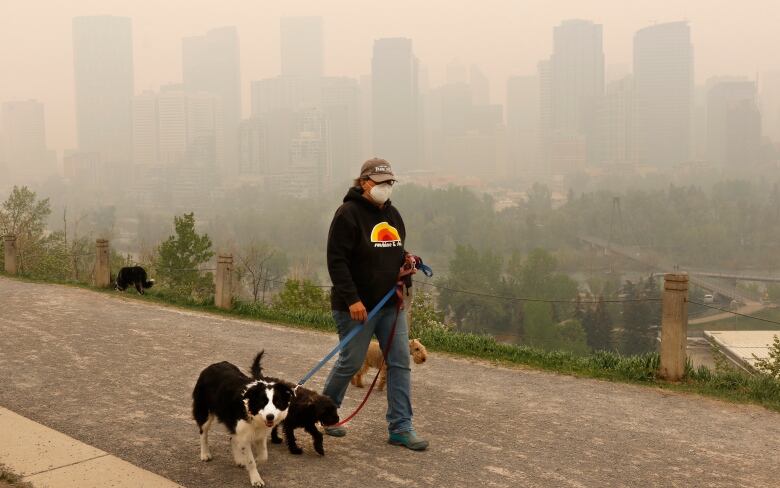If you think it's been a lot smokier in Calgary in recent summers you're right
Number of smoke hours from May to September are way up in the past decade

It's not your imagination. It's not recency bias. It's real: Calgary summers are way smokier than they used to be.
"We have data going back to 1952,"Terri Lang, a meteorologist withEnvironment and Climate Change Canada, said during a Calgary emergency management committee meeting earlier this month.
"We've seen a big increase in the last several years. Six of the last eight years, we've recorded over 100 hours of smoke."
The "climatological average" from 1981 to 2010, she added, is just 12 smoke hours per summer.
"This is smoke coming from any number of different sources, from the United States, through Alberta and British Columbia," Lang told the committee.
Her presentation to city councillors came on May 4, and she warned that the risk of fire and smoke was again high in 2023.
"May is starting off very warm and dry," she said. "May is forecast to be above average, temperature-wise, and drier than average with respect to precipitation."
That risk was quickly realized as wildfires spread rapidly across Alberta this month, and the effects were felt in Calgary as thick smoke enveloped the city this week.
'The future is smoky'
Lang's presentation to city councillors included a quote fromMike Flannigan, a professor of wildland fire at the University of Alberta: "The future is smoky."
She said the smoke trends Calgary has seen over the past decade are expected to continue.
"There have been several studies that show a very strong link between global warming and increased wildfire activity," Lang said.
"These studies also show that observed increases in area burned in Canada during the last four decades are the result of human-induced climate change. This is because temperature is the most important predictor of area burned."

Sue Henry, chief of the Calgary Emergency Management Agency, said the city is aware of the risks and is factoring them into its future plans.
"Heat-related risks are complex and they pose a significant threat to Calgarians, communities and businesses," she told the committee.
"The city is working diligently to build policy and practices that help reduce the impact of these risks."
Dawn Smith, the city's lead on climate resilience and adaptation, said this includes specific plans.
"All Calgarians have a high potential to be exposed to wildfire smoke," she told the committee.
"Smoke impacts our health and the enjoyment of our summer, with poor air quality keeping many indoors."
There is also a direct risk from fire in some communities situated next to forested or grassy areas, Smith noted.












_(720p).jpg)


 OFFICIAL HD MUSIC VIDEO.jpg)
.jpg)



























































































